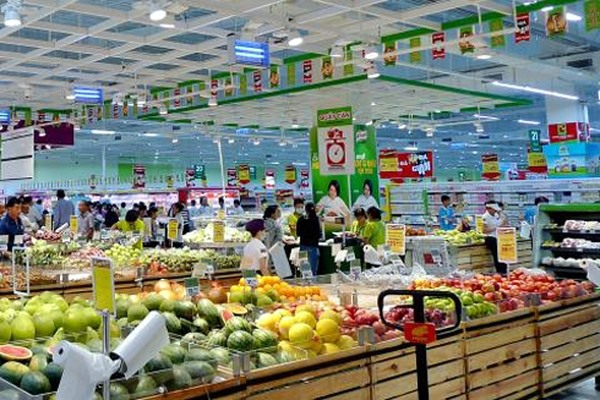 Economy
Economy

Việt Nam lacks an overall strategy to promote the sustainable development of domestic trade in the context of deep international integration, heard a conference held in Hà Nội on Tuesday.
 |
| The total revenue from retail trade and services saw rapid growth of 10.55 per cent a year in 2016-18. — Photo vov.vn |
HÀ NỘI — Việt Nam lacks an overall strategy to promote the sustainable development of domestic trade in the context of deep international integration, heard a conference held in Hà Nội on Tuesday.
Đỗ Thắng Hải, deputy minister of Industry and Trade, said domestic trade had played an important role in product consumption, meeting with goods demand and contributing to economic development.
In 2016-18, the average contribution of domestic trade to GDP was more than 10 per cent a year, creating jobs for about 12 to 13 per cent of the country’s total labourers.
Statistics from the ministry showed the total revenue from retail trade and services saw rapid growth of 10.55 per cent a year in 2016-18.
In addition to promoting international trade through import-export activities, the Government had paid much attention to developing domestic trade. The Government had approved some long-term plans to develop the market such as the movement ‘Vietnamese people give priority to Vietnamese goods’, Hải said.
In the context of the international integration, the Government instructed the ministry to build a strategy for domestic trade development by 2025 with a vision to 2035.
According to Trần Duy Đông, head of the ministry’s Domestic Department the local market has struggled with high intermediate costs due to a weak distribution network and slow application of science and technology in trade.
Additionally, smuggled and counterfeits goods have not been controlled while trade infrastructure has not been equally developed nationwide.
Meanwhile, the market system in rural areas has not been upgraded and there is still a big price difference among provinces and regions.
He added that price forecasts should be paid adequate attention, to avoid creating unfavourable conditions for the State, businesses and individuals.
“The building of the strategy would help improve competitiveness of local firms, especially small-and-medium sized enterprises. The strategy would also play an important role in promoting production and consumption through distribution channels, connecting rural and urban areas as well as promoting product chain association,” he said.
The strategy was divided into specific phases linked to the country’s strategy for socio-economic development.
He added that solutions and plans in the strategy would resolve distribution channels issues.
The draft strategy was also built to be suitable with commitments under the World Trade Organisation as well as bilateral and mutilateral trade pacts which Việt Nam has signed.
Trần Đình Thiên, former director of Việt Nam Institute of Economics, said developing the local market aimed to not only increase quantity but also growth quality.
The draft strategy should have forecasts on changing goods structure at distribution channels. In addition, it should catch up with the boom of e-commerce and payments to have suitable policies with the new payment methods.
“The programme ‘Vietnamese people give priority to use Vietnamese goods’ has seen positive results. However, in the new context, the policies for made-in-Viet Nam goods supply should be upgraded to conquer Vietnamese people,” Thiên added.
Phạm Đình Đoàn, deputy general director of Phú Thái Group said local producers should invest to improve their product quality to compete with imported items. In addition, they should pay attention to retail system planning to have a diverse and competitive distribution system.
Đinh Thị Mỹ Loan, chairwoman of Việt Nam Retailers Association said the Government should have a specific strategy for the retail service sector as it is an important industry. — VNS




